1930s
Woody Hockaday
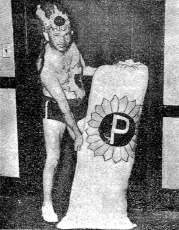 Woody Hockaday (1884-1947) made significant contributions to American history, but he's almost entirely forgotten today. According to the Kansas State Historical Society, he was "the first person to recognize the need for highway marking in the United States." So, on his own initiative, beginning in 1915, he started posting mileage markers on highways. Eventually "Hockaday signs" appeared on 60,000 miles of roads from Washington DC to Los Angeles.
Woody Hockaday (1884-1947) made significant contributions to American history, but he's almost entirely forgotten today. According to the Kansas State Historical Society, he was "the first person to recognize the need for highway marking in the United States." So, on his own initiative, beginning in 1915, he started posting mileage markers on highways. Eventually "Hockaday signs" appeared on 60,000 miles of roads from Washington DC to Los Angeles.But around 1935 he decided he needed to do something different with his life. So he started calling himself "Big Chief Pow Wow" and launched a "feathers instead of bullets" campaign. Dressed in red shorts, a feather war bonnet, sneakers, a painted sunflower on his chest, and carrying a huge bag of feathers, he would pop up at political rallies and pelt politicians with feathers (or sometimes live chickens). He explained that "to attract attention to peace a man must use sensational methods."
In 1936 he broke into the office of Assistant Secretary of War Harry Woodring and scattered feathers everywhere before being hauled away. And soon after that he launched a feather attack on radio priest Charles Coughlin.
In 1940, he combined a Santa Claus costume with his headdress and showed up in Rockefeller Plaza with a wagonload of 600 chickens. He screamed at the crowd, "I'm Santa Claus from Santa Fe. Peace! The whole world will have peace. Here, my friend, have a chicken."
Soon after that he was committed to an insane asylum. He died in 1947.

Posted By: Alex - Tue Jun 09, 2009 -
Comments (1)
Category: Eccentrics, Politics, 1930s
Inventions of Buckminster Fuller, part 1: the Dymaxion Car
This is just one of the many strange inventions that Fuller imagined would improve society. Dymaxion, which is an abbreviation of dynamic maximum tension, was the name he attached to many of his inventions.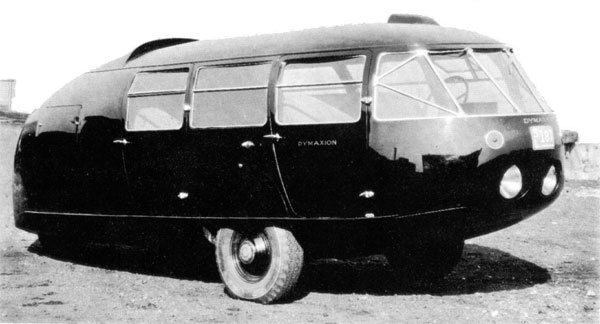
More in extended >>
Posted By: fyshstyxx - Fri May 15, 2009 -
Comments (5)
Category: Inventions, Odd Names, 1930s, Cars
African Pygmy Thrills
Posted By: Paul - Fri May 01, 2009 -
Comments (1)
Category: Ethnic Groupings, Movies, Documentaries, Stereotypes and Cliches, 1930s, Africa
Handies
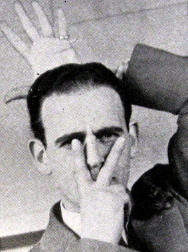 "Handies" was one of those bizarre fads that periodically sweep the country. It reached the high point of its popularity in the summer of 1936. After that, its descent was steep and fast. No one could figure out where the fad came from. From Time magazine:
"Handies" was one of those bizarre fads that periodically sweep the country. It reached the high point of its popularity in the summer of 1936. After that, its descent was steep and fast. No one could figure out where the fad came from. From Time magazine:So it was like a static version of charades. The image shows the Handy for "Indian riding in a V8." It's the only image of a Handy I could find. Not hard to see why the fad died out.
Posted By: Alex - Mon Mar 23, 2009 -
Comments (9)
Category: Fads, 1930s
The Amazing Dr. Clitterhouse
Besides having a great porn-movie title, this film starring Edward G. Robinson is just all over the map. Part comedy, part high-society drama, part courtroom drama, part gangster film, it features the loony premise of a medical doctor who becomes a crook for research purposes. Toss in Claire Trevor's weird lisp, and it's a surefire WU candidate!
Posted By: Paul - Sat Feb 14, 2009 -
Comments (9)
Category: Medicine, Movies, Stupid Criminals, 1930s
Catapulted Dummy Tests Driver’s Skill
 This would be a useful addition in ALL driver's ed courses, especially if the driver was given no warning. From Popular Science, Aug 1935:
This would be a useful addition in ALL driver's ed courses, especially if the driver was given no warning. From Popular Science, Aug 1935:
Posted By: Alex - Thu Feb 12, 2009 -
Comments (5)
Category: Cops, Motor Vehicles, Cars, 1930s
The Dionne Quintuplets

Today, we have the "Octo-mom."
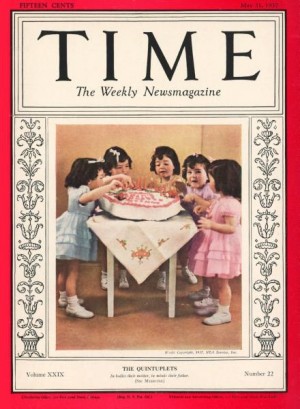
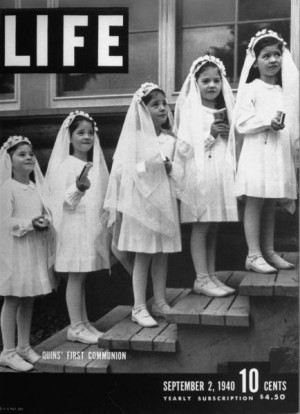
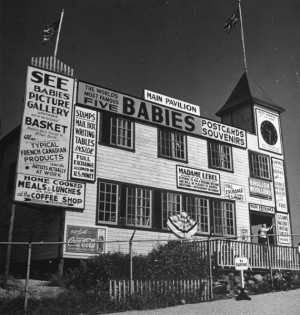

Posted By: Paul - Sat Feb 07, 2009 -
Comments (4)
Category: Babies, Body Modifications, Celebrities, Drugs, Fads, Family, Human Marvels, Obsessions, Pop Culture, Technology, 1930s
The Korn Kobblers
Once upon a time, this was considered amusing.[The second video comes courtesy of Deborah Newton.]
Posted By: Paul - Sat Jan 31, 2009 -
Comments (5)
Category: Humor, Music, Regionalism, Reader Recommendation, 1930s, 1940s
High-Speed Bus
How would you like to look in your rear-view mirror and see this thing coming up behind you fast? Since America can't seem to get its act together to build high-speed trains, maybe we could have high-speed buses instead. From Popular Science, October 1930:Porthole-shaped windows will give passengers a view of the roadside they are scudding past at eighty-five miles an hour, in a remarkable bus just completed at Paris, France. This juggernaut of the road seats 100 passengers, besides its two drivers. Every part is streamlined for speed, even to the curved emergency door in the rear. The machine is designed for express cross-country travel.
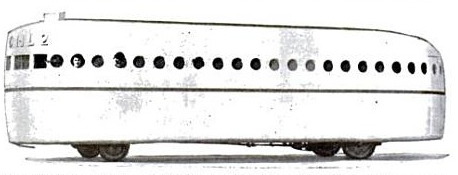
Posted By: Alex - Thu Jan 22, 2009 -
Comments (5)
Category: Travel, 1930s
Alexeieff’s NIGHT ON BALD MOUNTAIN
The animation you are about to see was created entirely with pushpins in a board, by Alexandre Alexeieff and Claire Parker.Let's let my pal, author and art expert Luis Ortiz, explain:
During the 1930s animators Alexander Alexeieff and wife Claire Parker invented a push-screen frame, basically a board with thousands of pins embedded into it. The pins were pushed into the board at various heights, using specially shaped tools, and lighted from different angles to create shadow pictures that could be filmed one frame at a time. I saw their version of Night on Bald Mountain, which preceded Disney's, back in the 1980s at film historian Cecile Starr's home (she owned a 16mm copy) and I remember being very impressed. But this unique method was too labor intensive (even by film animation standards), and for most of their later work the Alexeieffs used object animation.
Posted By: Paul - Wed Dec 17, 2008 -
Comments (2)
Category: Music, Cartoons, 1930s

| Who We Are |
|---|
| Alex Boese Alex is the creator and curator of the Museum of Hoaxes. He's also the author of various weird, non-fiction, science-themed books such as Elephants on Acid and Psychedelic Apes. Paul Di Filippo Paul has been paid to put weird ideas into fictional form for over thirty years, in his career as a noted science fiction writer. He has recently begun blogging on many curious topics with three fellow writers at The Inferior 4+1. Contact Us |




